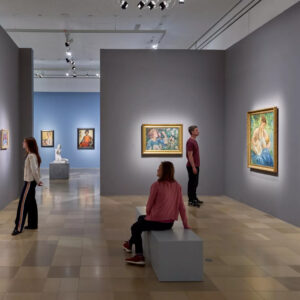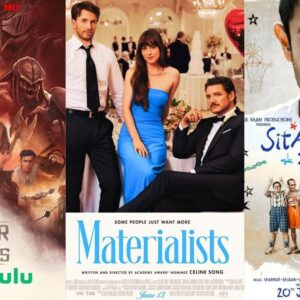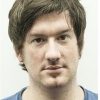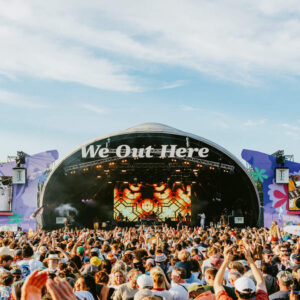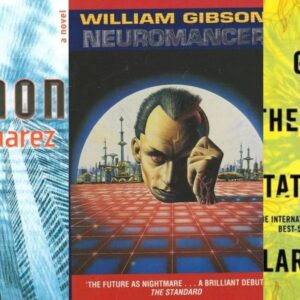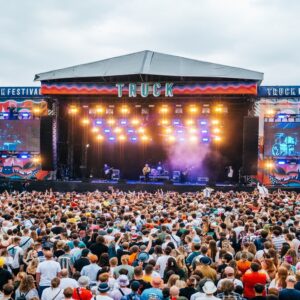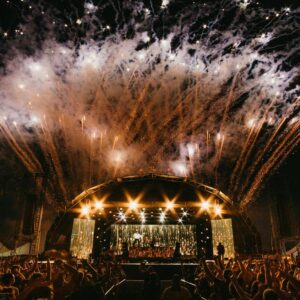Say Hi to Paul Harries, a renowned music photographer who has worked extensively in the music scene now over two decades. He has photographed many of the artists whose music adorns your playlist. He even hung out with Corey from Slipknot in a field, as part of a photo session. Paul’s interest started around the time when musical greats such as Adam Ant and Sixiousie Sioux began making their mark on the music scene.
In that time Paul has even dabbled in making music videos with friends who are also film-makers, and apparently, it’s not that different from directing a photo-session. Within the last five years, he has curated his own exhibition displaying his images from his collection of Slipknot. And it was also ten years ago he took part in another exhibition in which he displayed his work alongside five other photographers including Andy Willsher. Paul Harries’s work can be seen in the rock magazine, Kerrang.
“I think I was mostly influenced by musicians who have a definite “image” and my desire to capture that on film”
You have been working as a photographer now for over two decades, what first inspired you to pick up a camera?
My love of photography started at school, my art teacher taught us how to make pinhole cameras and then process the images in the darkroom. I thought this was magical!
Now when people pick up their camera it’s either as a hobby or their job, what made you decide to do it as a job?
When I first started going to see live music, I was always at The Marquee Club when it was in Wardour St. There were no camera restrictions so I started shooting gigs as a hobby. As my results improved, I thought I could be on to something…
Over the years quite a lot has changed in regards to the format e.g. equipment, techniques, black-and-white to color, film-to-digital, etc. How challenging did you find it to adapt to the changes?
The change from film to digital was a challenge at first. I needed to learn a whole new set of skills and it is never ending as the camera and software technology evolves. Fortunately, I’m able to make the most of it and experiment with the ever-changing tech.
As a photographer is there anybody’s work that you look at and think ‘that’s a good technique, I’ll try and give it a go’?
I was always very impressed with Bob Carlos Clarke’s printing technique, he used different negatives to create an image. I tried this in the darkroom but it was a lot harder than I imagined. This kind of composite image-making is now a lot easier with computers and Photoshop.
And when you first started out whose who would you say had an influence on yours?
I think I was mostly influenced by musicians who have a definite “image” and my desire to capture that on film. When I was growing up it was always artists like Adam Ant and Siouxsie Sioux who most appealed to me. This is probably why I enjoy working with Slipknot so much.
Looking at your work you’re particularly well-known for your images for Kerrang music magazine, how did you first get started with them?
I was shooting for a fanzine; the editor was friends with someone at Kerrang and when they needed a photographer at short notice, he recommended me.
Ten years ago, you exhibited your work alongside five other photographers including Andy Willsher in Camden, London. How did you get involved in the show?
We all go way back; I was invited to join after Proud Galley agreed to put on the show.
Like many others I enjoyed both the show and your work
Thank you, glad you got to see it.
Before our current (Covid-19) situation and cos no few days are much the same for a photographer, describe a day in your life as a photographer, from when it begins to after the last shot of the day?
As you say no two days are the same. Sometimes a shoot can be all day in the studio and another be ten minutes with an artist before they are due on stage. Weirdly some of my best shots have been a result of high-pressure situations when things haven’t gone quite to plan. A hospitalised member of Slipknot and rapidly fading light resulted in one of my favourite portraits.
Going back to as recently as 2017 you curated your own exhibition ‘Access All Areas’ at Proud Galleries which was for almost two weeks. When did the moment come that you decided to organise an event of your own?
(The exhibition was actually from 9th March to 23rd April and then extended to 21st May)
I had exhibition at Proud Central gallery (John Adam St) to launch my Slipknot book back in 2015 and their gallery manager invited me back to exhibit a career defining collection at Proud Camden a few years later. It was really hard to edit down to 60 prints but when it was extended for an extra four weeks, I went in with some extra images for a rejig.
Now, over the years you have photographer many well-known names such as Metallica, Ozzy Osbourne, Tinie Tempah and Craig David to name but a few. Whenever you work with different subjects how easy can it be to work with them?
I find most musicians very easy and professional to work with, whether it be Marilyn Manson, Green Day, Lewis Capaldi or Dua Lipa – we all understand there is a job to be done.
And as creatives themselves do they bring any ideas to the photo-sessions?
Sometimes yes, most great ideas tend to happen during the shoot, I enjoy those “let’s try this” moments.
The arts world is simply littered with collaborations whenever it comes to the artist e.g. photographers film-makers will do something together, same with writers and poets. Unless you’ve already done so have you ever thought of doing the same thing?
I directed some music videos with some film maker friends of mine. The process is very similar to directing a photo shoot.
Since March, and to due to our current Covid-19 situation, has it affected the way you work in regards to shooting techniques and arranging photo-sessions?
I work just the same as before but am obviously mindful of keeping a safe distance and wearing a mask when necessary. Fortunately, the studios I use are very hot on making a safe space with cleaning etc.
What can we expect, or continue to expect from you, for the rest of 2020 going into 2021?
Obviously COVID-19 has had a big impact on the music business but with a vaccine on the horizon I am looking forward to shooting some of the artists I know well when touring starts again.
In the meantime, the lockdown has given me a chance to go back through my archive and find some hidden gems. 2021 may well see a new exhibition.
And finally, where can people view your work and find out about any upcoming events?
My website and print shop is www.paulharries.com I also post something new daily on my Instagram @paulharries


